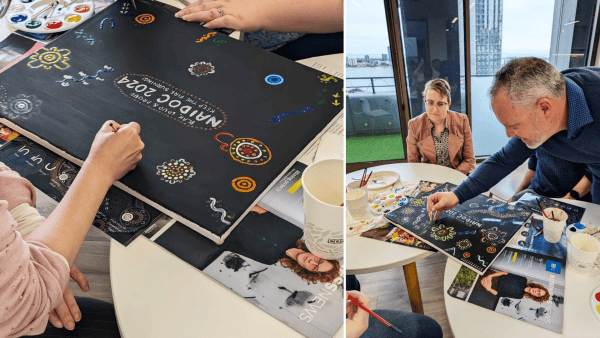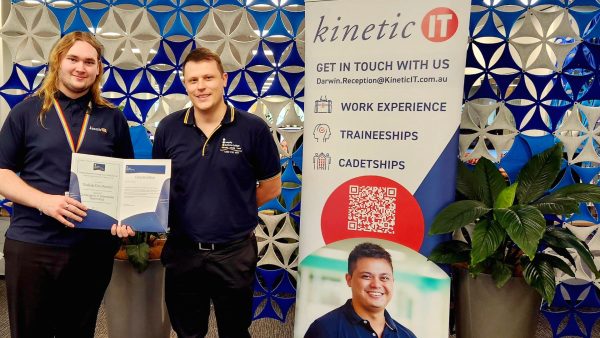Kinetic IT is proud to sponsor Scopism’s Global SIAM Survey 5-year whitepaper which analyses how the practice of Service Integration and Management has evolved over time. In this insight, Simon Dorst and Michelle Major-Goldsmith explore what’s trending in SIAM and where the profession is going.
It’s hard to believe it’s only 7 years ago that the SIAM Foundation Body of Knowledge was launched, and five years since Scopism released the first Global SIAM Survey into the world.
Not that SIAM (Service Integration and Management) was an unknown term before then – it was first coined in the early 2000s – but the Bodies of Knowledge provided codification, classification, and categorisation of the concepts. Since then, it has become globally recognised as the methodology to manage multi-provider environments.
To celebrate this milestone, Scopism has released an analysis of five years-worth of survey data to see how SIAM has evolved over that time. We will discover more SIAM insights later this year when the annual Global SIAM Survey returns, again sponsored by Kinetic IT.
You can download the whitepaper on our website, but we’ve taken a closer look at the data to see, long term, what’s happened in the world of SIAM. Here are three trends that we think are most relevant to SIAM in modern organisations.

RELATED CONTENT: Kinetic IT proudly sponsors Scopism Global SIAM Survey 5-Year whitepaper
1. SIAM is no longer optional
Service integration is, at the heart of it, integrating ‘things’ to form an end-to-end service that delivers business outcomes. Traditionally these ‘things’ were technical components like servers, applications or network equipment. The need to manage these service chains as a whole was the driving force behind the rise of service management and its practices throughout the late 1990s and into the 2000s.
More and more, these components are becoming ubiquitous. Cloud is perhaps the biggest proponent of this where applications and data are provided anywhere (to any device) without the need to manage individual components. As such, the attention shifts to not so much managing the technical infrastructure but the service providers.
The last few years have seen a proliferation of such service providers. Where at the turn of the century it was common to have at most one or two external service providers, these days we see multiple providers, above and beyond the internal ones. With that there is also a move from a single, long-term contract (5+ years) to shorter and more flexible contracts as businesses and technologies are more volatile and need to be able to shift focus quickly.
The result of these developments is that integration of service components – whether technology or provider – is inevitable for almost any organisation. Thus, the application of the SIAM common sense concepts, structures, practices and assets will benefit any organisation in doing this.
At Kinetic IT, we’ve seen this increase represented through tenders, requests for information and business proposals regarding SIAM services, showing the recognition of this methodology in the market and validation that it requires an expert and experienced approach.
RELATED CONTENT: SIAM Global Survey – What is it and how to get involved
2. SIAM is a whole of business thing
While the increase in the number of service providers, and the management of their contracts and performance, is one of the more obvious reasons to consider a SIAM model, it is perhaps not the most important one.
The objective of service management is to provide service outcomes and value to the business. If the business is static with little change, then this can perhaps be achieved with set-and-forget processes and defined delivery targets. But few businesses are like that these days, and the dynamic nature of the business and its needs often requires a flexible and agile approach from service providers.
One of the most overlooked and underestimated aspects of an agile working practice is the increased role and responsibility of the customer. After all, the flexibility and changes to timeframes and deliverables need to be governed in view of the business’ intended outcomes. This is no different to a SIAM environment where the customer’s retained capabilities play a crucial role in setting SIAM strategy and governing the design, implementation and operation of the SIAM model.
But there is more to it. Integrating multiple organisations to provide an end-to-end outcome for the business requires communication, coordination, and the development of a one-team culture where providers are encouraged and also empowered to go beyond their contractual restrictions to deliver a better outcome together.
This is why in the SIAM Bodies of Knowledge there is so much emphasis on collaboration across a SIAM environment – across service providers but also between the service integrator and the customer’s in-house team – and why in the Global SIAM Survey we have seen the role of organisational change management becoming increasingly important to respondents.
SIAM is more than a smart template for contracts or a dashboard for reporting on performance (although they certainly help). It includes management and governance of business outcomes, and creating a culture and environment that is ready for the challenges of tomorrow.
RELATED CONTENT: Kinetic IT and Qantas Group delivering world-class IT solutions for travellers
3. SIAM needs unique skills
SIAM introduces the concept of a service integrator, a logical entity whose responsibility it is to integrate the performance of individual service providers to deliver outcomes to the customer organisation. This role sits between delivery (technical, operational focus) and corporate governance (strategic focus). Without the benefit of holding the actual contracts – as those remain within the customer’s in-house capabilities – it can sometimes be seen as token.
For the service integrator to work efficiently and effectively, it needs to rely on skills that may be unfamiliar: communication, coordination, facilitation and indeed ‘influence’. We sometimes describe SIAM as ‘Service Influence and Management’ as increasingly the work required goes beyond the defined agreed contracts, targets or processes and requires heuristic activities; the mental capability to find shortcuts to aid problem-solving. These activities are dependent on the individuals involved, their experience and expertise, and also their relationships and willingness to work together across organisational and/or contractual boundaries.
This capability is typically more prevalent in the service integrator layer, which needs to influence not only the service providers but also the customer-retained capabilities in participating in and providing guidance to the SIAM environment. It also extends into the customer-retained layer as their working practices need to shift from hands-on management to oversight, governance and direction. They, in turn, need to influence the organisation-as-a-whole (communicate, create awareness, encourage involvement) to obtain the best benefit from the SIAM environment.
In the Global SIAM Survey over the past five years, we have seen the recognition of SIAM requiring specific skills. This acknowledgement has grown in prominence in the challenges section (like the organisational change management challenge mentioned earlier). It has also grown in the capabilities and skills needed category; these are increasingly less technical and defined, but more in the ‘soft skill’ space (an unfortunate name that doesn’t do justice for these invaluable capabilities).
These skills are communication, negotiation, stakeholder management and engagement. We’ve also seen the need in the training space where education, like the SIAM Foundation course, can provide a common basis for people to understand SIAM concepts as well as direction and objectives. Through our training courses, we often hear comments like, ‘I wish that my colleague, managers, other providers … would attend this course!’. Indeed, SIAM skills are critical skills for the future but can also make a significant difference right now.

RELATED CONTENT: Navigating volatility, uncertainty, complexity and ambiguity in service management
What’s trending in SIAM? A lot, actually
Wrapping up, five years of the Global SIAM Survey (and 7 years of the Bodies of Knowledge) has seen SIAM globally accepted as best practice in managing multi-provider environments.
In terms of what’s trending, we encourage you to go take a look at the whitepaper. You’ll see a variety of things such as:
- There’s an increased understanding of the skills required to perform effective service integration and not just service management.
- Organisations are wanting to get more involved in the integrator role, and SIAM models are increasingly evolving to hybrid solutions.
- There is awareness that SIAM education and training is important to success.
- There is increased focus on the role of organisational change management.
- Cost cutting and adherence to contracts has been overtaken by outcomes focus and building a healthy ‘one team’ culture for success.
Like any practice, the practical application of SIAM doesn’t revolve around magical formulas, uniform practices or ‘that one thing’. Instead, it requires contextual application within an organisation:
- Who do you need to influence?
- How can you influence them?
- What are your stakeholders focused on and how do these align to business outcomes?
Once you know these answers, you can move towards establishing an achievable model, step-changes and continuous improvement. As such, SIAM is not a silver bullet but is guidance for a complex, multi-provider environment that is focused on providing outcomes to the business.
The Global SIAM Survey has, over the past five years, shown how other organisations are either considering SIAM or already working with SIAM, as well as the experience of professional SIAM service providers. This provides great advice for considerations in your SIAM environment, and we already look forward to the 2023 edition (and beyond).
RELATED CONTENT: Case study – Kinetic IT’s remote ITIL training a success
SIAM at Kinetic IT
Technology solutions business Kinetic IT is one of Australia’s largest providers of service integration and management (SIAM), entrusted by large organisations to manage and protect their IT environments.
As well as delivering SIAM for some of Australia’s largest organisations, including the Australian Department of Defence, the Australian Taxation Office and Qantas Group, the company is engaged in professional SIAM consulting across a range of industries as well as being recognised as an ITIL and SIAM training provider.
Contact us to find out how SIAM can harmonise your IT world.
About the authors
Simon Dorst is Kinetic IT’s Manager for Service Management Services. ITIL trained in 1992, he has spent most of his career educating and advising people and organisations of SIAM’s benefits and application in the Netherlands, Singapore and Australia. In 2022, Simon received the Service Management Lifetime Contribution award from itSMF Australia. Follow Simon Dorst on Twitter.
Michelle Major-Goldsmith is Kinetic IT’s Principal Consultant, Service Integration, working with crew and customers to apply SIAM principles in a practical way tailored to multi-vendor environments. Michelle was awarded the itSMF Australia Service Management Champion of the Year in 2017 and Thought Leader of the Year (together with Simon Dorst) in 2018. She is currently the project editor for the ISO 20000 part 14 standard for SIAM, expected to be published later this year. Follow Michelle Major-Goldsmith on Twitter.
Both Simon and Michelle were lead architects for Scopism’s second edition of the Service Integration and Management Bodies of Knowledge, the SIAM Professional Bodies of Knowledge and are founding members of the SIAM Foundation Bodies of Knowledge architect team. As SIAM Community Champions for the newly-launched Scopism SIAM Community, they are recognised as global thought leaders and experts in their field.














